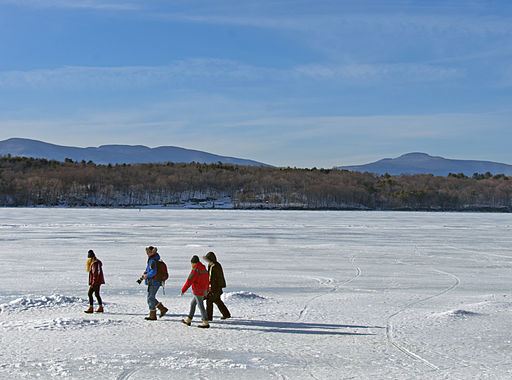Walking is not only a way to get around; it has played a fundamental role in human development over millions of years. Today, the act of putting one foot in front of the other continues to tell us more about ourselves–and the world in which we live–than we ever knew.
Jean Jacques Rousseau wrote, “My mind only works with my legs.” Soren Kierkgaard wrote, “I’ve walked myself into my best thoughts.” Henry David Thoreau was a dedicated walker to say the least. And Martha Guerra walked to show solidarity with her sisters in the National Organization of Women (NOW).
The radio program Ideas with Paul Kennedy recently featured a fascinating two-part series on walking. You can stream it for free from the CBC Radio website:
Some people acknowledge walking as a form of meditation. Archaeologists see walking as a link between us and our nomadic ancestors who hiked the Earth nearly 4 million years ago. When people lose the ability to walk as they once could, they feel a loss that cuts much deeper than immobility–as the animator Dan McLaughlin, who suffered a debilitating stroke, describes in “Walking Matters, Part 2.”
The healing power of walking is well documented, and it not only improves our muscle strength, balance, and cardiovascular health–it’s deeply connected to our mental health as well. The way we walk says a lot about us. It can even tell medical professionals about our cognitive state.
Observing the mind through the feet
In 2012, The New York Times highlighted five studies presented at the Alzheimer’s Association International Conference in Vancouver that all pointed to the connection between walking and thinking. The findings have led some scientists to suggest that changes in the way we walk might actually be observable before we can see direct evidence of cognitive decline, such as Alzheimer’s or dementia.
Pam Belluck, the author of the article, writes, “For decades, people thought slower walking was just part of getting old, but research shows some changes in gait signify problems that go beyond normal aging.”
You can read “Footprints to Cognitive Decline and Alzheimer’s Are Seen in Gait” at The New York Times website.
How is walking a part of your life? Try asking a friend or family member how you walk. Does it match your own self-perception?
To learn more about the wonders of walking, check out the following reading list recommended by Ideas:
Dean Falk
The Fossil Chronicles: How Two Controversial Discoveries Changed Our View of Human Evolution, University of California Press, 2011.
Finding Our Tongues: Mothers, Infants & the Origins of Language, Perseus/Basic Books, 2009.
Braindance Revised and Expanded, University Press of Florida, 2004.
“Brain Evolution in Females: an Answer to Mr. Lovejoy,” in Women in Evolution, L. Hager, ed., London: Routledge, pp. 114-136.
Robert Macfarlane
The Old Ways: a Journey on Foot, Hamish Hamilton, The Penguin Group, 2013.
The Wild Places, Penguin Books, 2007.
Mountains of the Mind: Adventures in Reaching the Summit, Vintage Books, 2004.
Susan Orlean
“The Walking Alive,” The New Yorker magazine, May 20, 2013.
Wayne Curtis
The Last Great Walk: The True Story of a 1909 Walk from New York to San Francisco and Why It Matters Today, Rodale, September 2012.
Dan McLaughlin
11 Films by Dan McLaughlin, Pyramid Media, 2004.
Geoff Nicholson
The Lost Art of Walking: the History, Science, Philosophy, and Literature of Pedestrianism, Riverhead Books, 2008; Walking in Ruins, Harbour Books, 2013.
Cheryl Strayed
Wild: from Lost to Found on the Pacific Crest Trail, Knopf, 2012.
Tiny Beautiful Things: Advice on Love and Life from Dear Sugar, Vintage Books, 2012.
Torch, Houghton Mifflin Harcourt, 2006.
Thich Nhat Hanh and Robert Aitken
The Long Road Turns to Joy: a Guide to Walking Meditation, Parallax Press, 1996.

